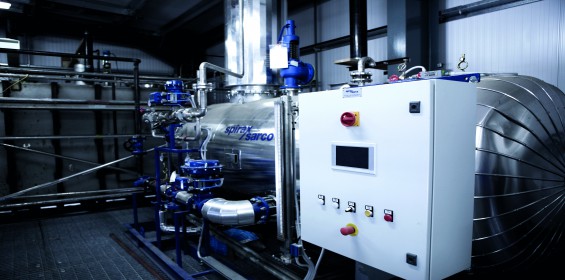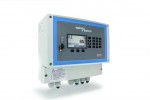Build your foundations before commissioning new equipment
Published: 01 March, 2019
With so many variables to consider in the planning, management and upgrade of steam boilers, it’s important for professionals to have a solid grounding in the “fundamentals of steam”. In turn, this will help to achieve better efficiency and safety. Chris Coleman, Boiler house National Specialist at Spirax Sarco, provides some of the principles that should empower plant managers to ask the right questions and to get the right results.
The specifics of steam systems
It is commonplace for industry understanding of steam systems to be somewhat limited. This is true across the board, whether your role is to simply ensure your plant is operating safely and efficiently, completely overhaul and plan a new steam system or identify, plan and implement steam and thermal energy efficiency improvements. Nevertheless, it is definitely beneficial to develop a basic understanding of the properties of steam before consulting an expert.
Meeting specification, deadlines, budget, safety and regulatory requirements, are but a few considerations that can cause the most accomplished of plant managers a headache. Not to mention energy efficiency targets and minimising downtime. Until it becomes a priority, much of the valuable background information you once had becomes a distant memory.
Steam systems at the core
Granted, there is a wealth of information available on steam systems and sometimes it can be a minefield to navigate. Therefore, we have identified the core elements that will give you a basic understanding: the different boiler types, how steam is produced into three variants and the condensate loop. Develop your knowledge in these areas and you are already on track to an optimised solution.
So, what’s to know?
In summary, shell boilers are the most common but there are many variations out there. And there are also three types of steam to know about – saturated, superheated and flash steam. As a versatile purveyor of energy, the way in which steam is produced and distributed both have a significant impact on its potential performance and economy for the end user. There are also technical materials worth being familiar with, such as steam tables which help provide more detail around the properties of steam at varying pressures. And, while condensate in itself is a much wider topic to comprehend, make sure you have an understanding of the way it is created and should be recycled. Based on all of this, there are a number of key tests that you should consider carrying out such as feedwater treatment, deaeration and storage.
Justifying an upgrade
Clearly it would not be possible to upgrade a boiler ahead of conducting a full and thorough audit of the existing system. And, as with any piece of equipment in our industry, it will most likely not be a like-for-like for the system that is currently in place. Ask yourself two key questions: Has your facility changed in any way in terms of its requirements? Have there been any technological developments since the first install?
By re-acquainting yourself with the fundamentals of steam, be it through written literature or industry training courses, you can build the requisite knowledge you need to identify areas of improvement so fewer problems or faults need to be dealt with in future.
*************
Spirax Sarco has created a downloadable guide to The Fundamentals of Steam to make your job easier when it comes to upgrading: https://sxscom.uk/Fundamentals-of-steam
*************






 With the launch of the its B850 Flow Computer, SPIRAX SARCO says steam system operators can now accurately measure true boiler efficiency without the need for Building Management or Supervisory Control and Data Acquisition (SCADA) systems that can be costly and time consuming to implement.
With the launch of the its B850 Flow Computer, SPIRAX SARCO says steam system operators can now accurately measure true boiler efficiency without the need for Building Management or Supervisory Control and Data Acquisition (SCADA) systems that can be costly and time consuming to implement.
